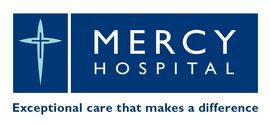Central Lakes, Dunedin - South Otago, Southland, Waitaki > Private Hospitals & Specialists > Mercy Healthcare >
Mercy Hospital Dunedin - Orthopaedic Surgery
Private Surgical Service, Orthopaedics
Description
Mercy Hospital is a not-for-profit surgical hospital committed to delivering 'exceptional care that makes a difference' to Otago and Southland residents.
Independent specialists provide services that relate to the branch of surgery concerned with conditions involving the musculoskeletal system e.g. arthroplasty is surgery to relieve pain and restore range of motion by realigning or reconstructing a joint. Arthroscopy is an instrument through which the interior of a joint may be inspected or operated on.
This surgical service is provided at our facility by the following medical specialists. For further information please seek a referral through your GP.
Consultants
Note: Please note below that some people are not available at all locations.
-

Mr Wesley Bevan
Orthopaedic Surgeon
Available at Mercy Hospital Dunedin, 72 Newington Avenue, Māori Hill, Dunedin
-
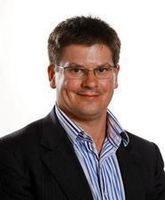
Mr Chris Birks
Orthopaedic Surgeon
Available at Mercy Hospital Dunedin, 72 Newington Avenue, Māori Hill, Dunedin
-

Ms Lizzie Bond
Orthopaedic Surgeon
Available at all locations.
-

Mr Kenan Burrows
Orthopaedic Surgeon
Available at all locations.
-
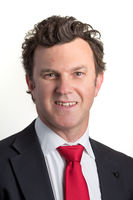
Mr Alan Carstens
Orthopaedic Surgeon
Available at Mercy Hospital Dunedin, 72 Newington Avenue, Māori Hill, Dunedin
-
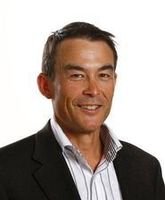
Mr Michael Chin
Orthopaedic Surgeon
Available at Mercy Hospital Dunedin, 72 Newington Avenue, Māori Hill, Dunedin
-

Mr Carl Chisholm
Orthopaedic Surgeon
Available at Mercy Hospital Dunedin, 72 Newington Avenue, Māori Hill, Dunedin
-
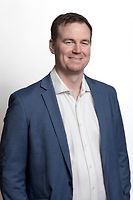
Mr Liam Dunbar
Orthopaedic Surgeon
Available at all locations.
-

Mr Paul Eaton
Orthopaedic Surgeon
Available at Mercy Hospital Dunedin, 72 Newington Avenue, Māori Hill, Dunedin
-
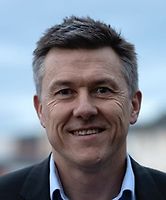
Mr Fraser Harrold
Orthopaedic Surgeon
Available at Mercy Hospital Dunedin, 72 Newington Avenue, Māori Hill, Dunedin
-
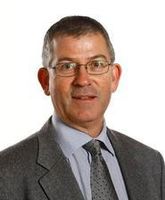
Mr Bruce Hodgson
Orthopaedic Surgeon
Available at Mercy Hospital Dunedin, 72 Newington Avenue, Māori Hill, Dunedin
-

Mr Oliver Johnson
Orthopaedic Surgeon
Available at all locations.
-
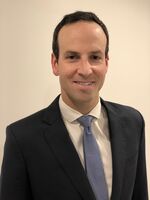
Dr Louis LeBlond
Orthopaedic Surgeon
Available at all locations.
-

Mr Gary McCoubrey
Orthopaedic Surgeon
Available at all locations.
-

Mr John Scanelli
Orthopaedic Surgeon
Available at all locations.
-

Dr Shea Timoko-Barnes
Orthopaedic Surgeon
Available at all locations.
Procedures / Treatments
Two or three small incisions (cuts) are made in the ankle and a small telescopic instrument with a tiny camera attached (arthroscope) is inserted. This allows the surgeon to look inside the joint, identify problems and, in some cases, operate. Tiny instruments can be passed through the arthroscope to remove bony spurs, damaged cartilage or inflamed tissue.
Two or three small incisions (cuts) are made in the ankle and a small telescopic instrument with a tiny camera attached (arthroscope) is inserted. This allows the surgeon to look inside the joint, identify problems and, in some cases, operate. Tiny instruments can be passed through the arthroscope to remove bony spurs, damaged cartilage or inflamed tissue.
An incision (cut) is made in the front of, and several smaller cuts on the outside of, the ankle. The damaged ankle joint is replaced with a metal and plastic implant.
An incision (cut) is made in the front of, and several smaller cuts on the outside of, the ankle. The damaged ankle joint is replaced with a metal and plastic implant.
Surgery to relieve carpal tunnel syndrome involves making an incision (cut) from the middle of the palm of your hand to your wrist. Tissue that is pressing on the nerve is then cut to release the pressure.
Surgery to relieve carpal tunnel syndrome involves making an incision (cut) from the middle of the palm of your hand to your wrist. Tissue that is pressing on the nerve is then cut to release the pressure.
An incision (cut) is made over the relevant part of the spine and the bulging part of the painful disc is cut off and removed.
An incision (cut) is made over the relevant part of the spine and the bulging part of the painful disc is cut off and removed.
Small incisions (cuts) are made in the hip area and a small telescopic instrument with a tiny camera attached (arthroscope) is inserted. This allows the surgeon to look inside the joint, identify problems and, in some cases, operate. Tiny instruments can be passed through the arthroscope to remove loose, damaged or inflamed tissue.
Small incisions (cuts) are made in the hip area and a small telescopic instrument with a tiny camera attached (arthroscope) is inserted. This allows the surgeon to look inside the joint, identify problems and, in some cases, operate. Tiny instruments can be passed through the arthroscope to remove loose, damaged or inflamed tissue.
An incision (cut) is made on the side of the thigh to allow the surgeon access to the hip joint. The diseased and damaged parts of the hip joint are removed and replaced with smooth, artificial metal ‘ball’ and plastic ‘socket’ parts.
An incision (cut) is made on the side of the thigh to allow the surgeon access to the hip joint. The diseased and damaged parts of the hip joint are removed and replaced with smooth, artificial metal ‘ball’ and plastic ‘socket’ parts.
Several small incisions (cuts) are made on the knee through which is inserted a small telescopic instrument with a tiny camera attached (arthroscope). This allows the surgeon to look inside the joint, identify problems and, in some cases, make repairs to damaged tissue.
Several small incisions (cuts) are made on the knee through which is inserted a small telescopic instrument with a tiny camera attached (arthroscope). This allows the surgeon to look inside the joint, identify problems and, in some cases, make repairs to damaged tissue.
An incision (cut) is made on the front of the knee to allow the surgeon access to the knee joint. The damaged and painful areas of the thigh bone (femur) and lower leg bone (tibia), including the knee joint, are removed and replaced with metal and plastic parts.
An incision (cut) is made on the front of the knee to allow the surgeon access to the knee joint. The damaged and painful areas of the thigh bone (femur) and lower leg bone (tibia), including the knee joint, are removed and replaced with metal and plastic parts.
Several small incisions (cuts) are made in the shoulder through which is inserted a small telescopic instrument with a tiny camera attached (arthroscope). The surgeon is then able to remove any bony spurs or inflamed tissue and mend torn tendons of the rotator cuff group.
Several small incisions (cuts) are made in the shoulder through which is inserted a small telescopic instrument with a tiny camera attached (arthroscope). The surgeon is then able to remove any bony spurs or inflamed tissue and mend torn tendons of the rotator cuff group.
This surgery involves making several small incisions (cuts) on the shoulder through which is inserted a small telescopic instrument with a tiny camera attached (arthroscope). This allows the surgeon to look inside the shoulder, identify problems and, in some cases, make repairs to damaged tissue.
This surgery involves making several small incisions (cuts) on the shoulder through which is inserted a small telescopic instrument with a tiny camera attached (arthroscope). This allows the surgeon to look inside the shoulder, identify problems and, in some cases, make repairs to damaged tissue.
An incision (cut) is made over the relevant part of the spine. Two or more vertebrae (the small bones that make up the spinal column) are fused together with bone grafts and/or metal rods to form a single bone.
An incision (cut) is made over the relevant part of the spine. Two or more vertebrae (the small bones that make up the spinal column) are fused together with bone grafts and/or metal rods to form a single bone.
An incision (cut) is made over the damaged tendon. The damaged ends of the tendon are sewn together and, if necessary, reattached to surrounding tissue.
An incision (cut) is made over the damaged tendon. The damaged ends of the tendon are sewn together and, if necessary, reattached to surrounding tissue.
Website
Contact Details
Manaaki by Mercy, 72 Newington Avenue, Māori Hill, Dunedin
Dunedin - South Otago
-
Phone
03 467 6710
Email
Website
Manaaki by Mercy
72 Newington Avenue
Maori Hill
Dunedin
OTA 9010
Street Address
Manaaki by Mercy
72 Newington Avenue
Māori Hill
Dunedin
OTA 9010
Postal Address
Private Bag 1919,
Dunedin 9054
Mercy Hospital Dunedin, 72 Newington Avenue, Māori Hill, Dunedin
Dunedin - South Otago
-
Phone
(03) 464 0107
Website
Was this page helpful?
This page was last updated at 2:51PM on August 21, 2025. This information is reviewed and edited by Mercy Hospital Dunedin - Orthopaedic Surgery.

